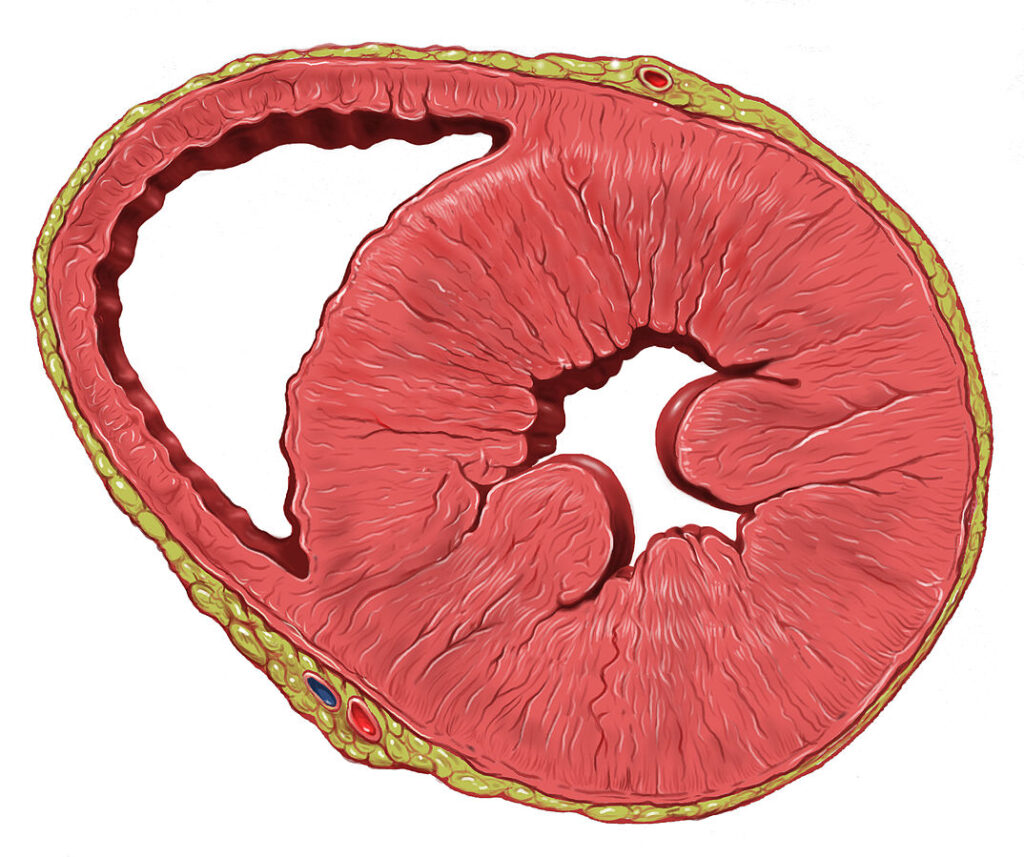Updated March 12, 2022
The heart is essential for life, pumping blood through the body with an average of 100,000 beats a day, 60-100 beats per minute. The muscle is made of the myocardium, specialized muscle fibers that rhythmically contract when working properly, resulting in the heartbeat. Primary myocardial diseases are due to problems with the myocardium (as opposed to occurring secondary to other problems). Another way to state this is that primary myocardial disease affects the heart while sparing other organs.
Primary myocardial disease can be congenital or acquired, though most acquired forms are secondary disease. Congenital defects are heart problems that are present at birth. If inflammation has injured the heart tissue, it is called myocarditis, but if it is a defect in the heart tissue itself it is called a cardiomyopathy. Other primary myocardial diseases are arrhythmias and valve deformities.
Cardiomyopathies
There are three main types of cardiomyopathies that sometimes overlap, with one problem leading to another:
- Dilated cardiomyopathy
- Hypertrophic cardiomyopathy
- Restrictive cardiomyopathy
Dilated cardiomyopathy
This form of myocardial disease is a dilation of the heart chambers, similar to a balloon being filled up. This dilation leads to progressive contractile dysfunction – a weakening of the fibers due to the stretching. The chambers of the heart end up with both dilation and hypertrophy, growing in thickness. This defect in the heart tissues occurs with alcohol abuse, toxicity, viral infections, and genetic mutations.

Hypertrophic cardiomyopathy
This form is usually simply called hypertrophy, a thickening of the left ventricle, interventricular septum, or mitral valve, causing outflow obstruction and abnormal diastolic filling. Hypertrophy reduces the blood volume in the ventricle, forcing the heart to work harder.
Restrictive cardiomyopathy
This condition can be explained as a thickening of the heart (also called cardiomegaly). The most common form is the result of a tropical childhood disease called endomyocardial fibrosis. The heart is essentially squeezed and unable to contract and pump, leading to the ventricles becoming non-compliant.
Arrhythmias
An arrhythmia is an irregular heartbeat. This can occur when anything alters the sequence of electrical impulses contributing to the heart’s rhythm. Arrythmias include missed beats (atrial fibrillation), rapid heartbeat (tachycardia), and slow heartbeats (bradycardia). Some arrhythmias are so brief they have no effect or go unnoticed, some do not require treatment and can be tolerated, yet others can be life-threatening. Only a doctor can diagnose which category an irregular heartbeat fits.

Heart Valve Deformities
As mentioned with cardiomyopathies, valve thickening occurs with some forms of heart disease. The valves are important for preventing blood backflow as it passes through the heart’s chambers. However, a thickened valve will prevent blood from moving forward and result in dilation, hypertrophy, or other problems depending on the circumstances.
Valve prolapse is the opposite problem. If the valve leafs become floppy or stretched out, they allow blood to flow freely backwards, called regurgitation. Regurgitation can cause other myocardial defects when the heart attempts to keep up with the need to pump blood forward.
Idiopathic heart disease
Idiopathic myocardial diseases, those with no known origin, include endocardial fibroelastosis (can be idiopathic or genetic). The connective tissue in the heart muscle thickens, constraining the heart’s function.
Disclaimer: This page is for informational and learning purposes only. It is not meant to diagnose or treat any medical condition and should not be used in place of speaking with a medical doctor or seeking treatment.
Aliconia Publishing, LLC and the author make any and all attempts to ensure the accuracy of the presented facts. If you find an issue with any information on these pages, please use the Contact page to alert us. The content is subject to change based on new information or to be updated with additional facts. The date of last change is stated under the main header.